To put things into perspective, I’m an 85 baby from South Australia. My Sizzler journey ended locally in the late 90s.
If you are from Victoria, Tasmania or South Australia, your Sizzlers closed in the late 90s. Northern NSW Sizzlers also closed during this period.
I remember a shift in the mid 90s. Pizza Hut started rolling out its buffets full-time from May 1993 in Australia.
Pizza Hut felt like it replaced Sizzler. It was the more affordable buffet of the two. It was also more family-friendly to children.
My fond memories of Sizzler are exclusive to the 1990s. However, if you were lucky, your State may have had Sizzlers that survived until 2020.
For me, Sizzler was one of my favourite family dining experiences growing up as a young child in Adelaide. I have memories of the amazing tasting and infamous Cheese toast. I usually stuck to the salad bar. I loved their Pumpkin soup. I topped it with way too many croutons you could help yourself to.
Then you had an all-you-can-eat dessert bar, with a soft serve ice cream being the highlight. I believe children mainly stuck to the soup, salad, and dessert bar in the 90s. I don’t remember eating any actual meals as a kid. The highlight for me was the Pumpkin soup. The last time I dined in my local state at a Sizzler was probably in 1995 or 1996.

Now let’s explore the history of Sizzler. We will also discuss why my State and a few others suddenly lost them. Additionally, we will examine the rise and fall of Sizzler in Australia.
The first Australian Sizzler opened in July 1985 after Collins Foods USA acquired Links Foods in Australia. Collins USA was also the owner of the Sizzler brand in the USA. It acquired the Sizzler brand in the USA in 1967.
The first Aussie Sizzler was a rebranded Link’s Bonanza restaurant in Brisbane. Colins opens up 3 more Sizzlers in 1985, and a man named Bob Lapointe opens the first Adelaide Sizzler in 1985. Sizzler moved into southern NSW during 1987-88
Now Sizzler was a franchise based restaurant in the 80s in Australia, that anyone could technically open. However Collins food was the franchise operator, and owned them all in Queensland. The rest turned out to be mostly owned by one company or group throughout the late 80s and 90s.

In late 1987, Bob Lapointe had interests in 40 restaurants that were both Sizzlers and Pizza Huts, they were only in NSW, Victoria and South Australia. Collins controlled Queensland in 1987. Thoroughbred breeding company Blandford Park Ltd took over his control in 1987 and paid $6.6 million for his interests in Pizza Huts and Sizzler Steak Houses. Bob became head of this company.
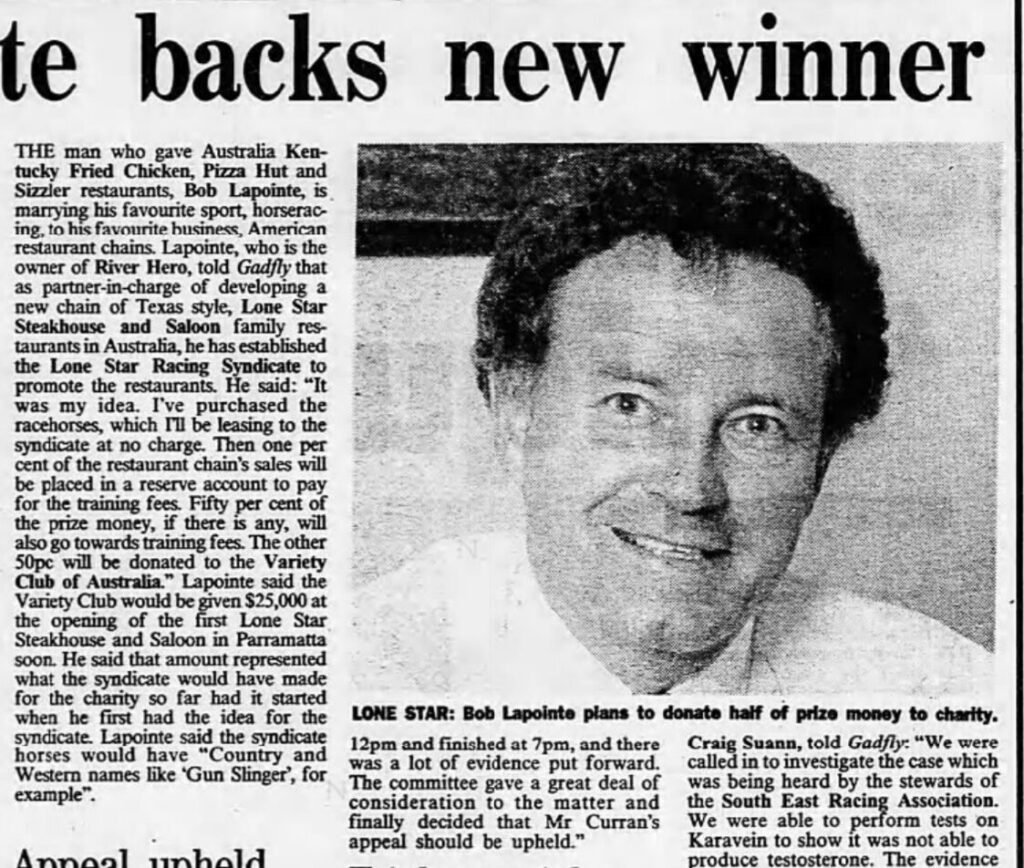
In June 1988, Collins Foods listed itself as an Aussie company on the Australian Stock Exchange. Collins Foods was also the franchisee owner for 57 Kentucky Fried stores in Australia, all in Queensland
The company controlled the Franchise of Sizzler Steak-Seafood-Salad Restaurants, so to open an Sizzler you would need to buy it from Collins Foods. However Collins foods owned and operated six itself in Queensland, three in Adelaide, and one in Sydney in 1987.
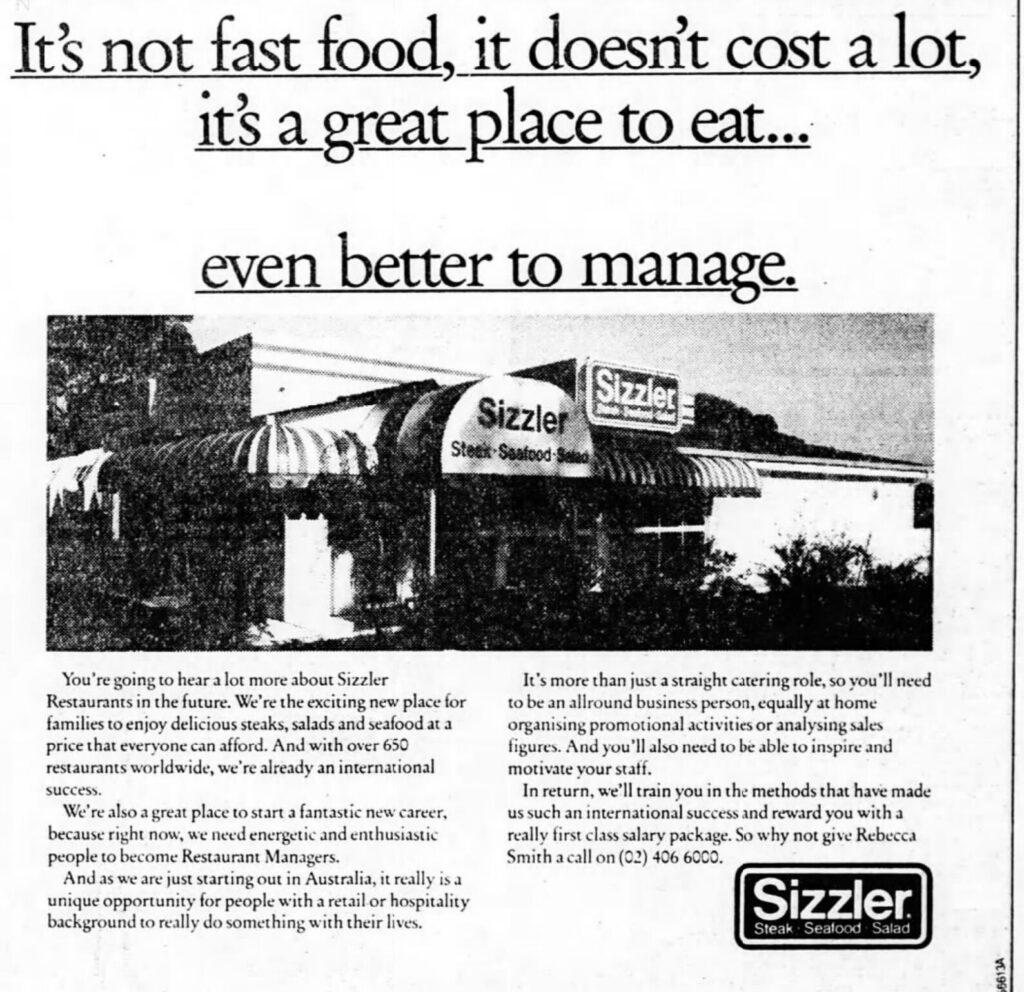
The Sizzler concept for Australia was a steak, seafood and salad restaurant that was tailor-made for Australia. It was meant to bridge the gap between takeaway food and fine dining. It was also designed as an affordable way to go out for dinner as a family, or young adult.
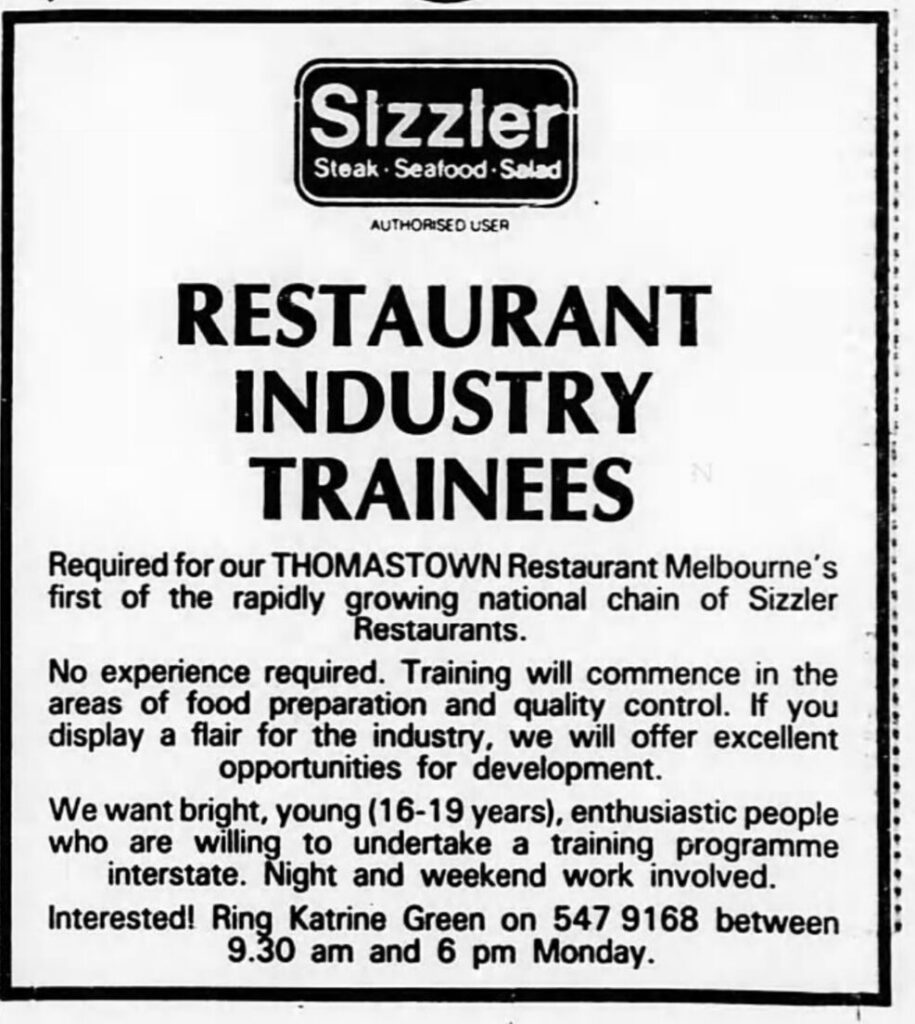
In January 1989 Collins announces plans to finally open in Victoria. Collins now runs seven Sizzlers in QLD, and there a 16 restaurants in total, nine are owned by Collins of the 16. There were now four Sizzlers in Sydney in 1989.

In May 1989, it is reported that there are now 20 Sizzlers in Australia. Sizzler is expanding to Northern NSW. Bob Lapointe and the Blandford Park racehorse business partners are opening these franchises. Collins had not extended into northern NSW.
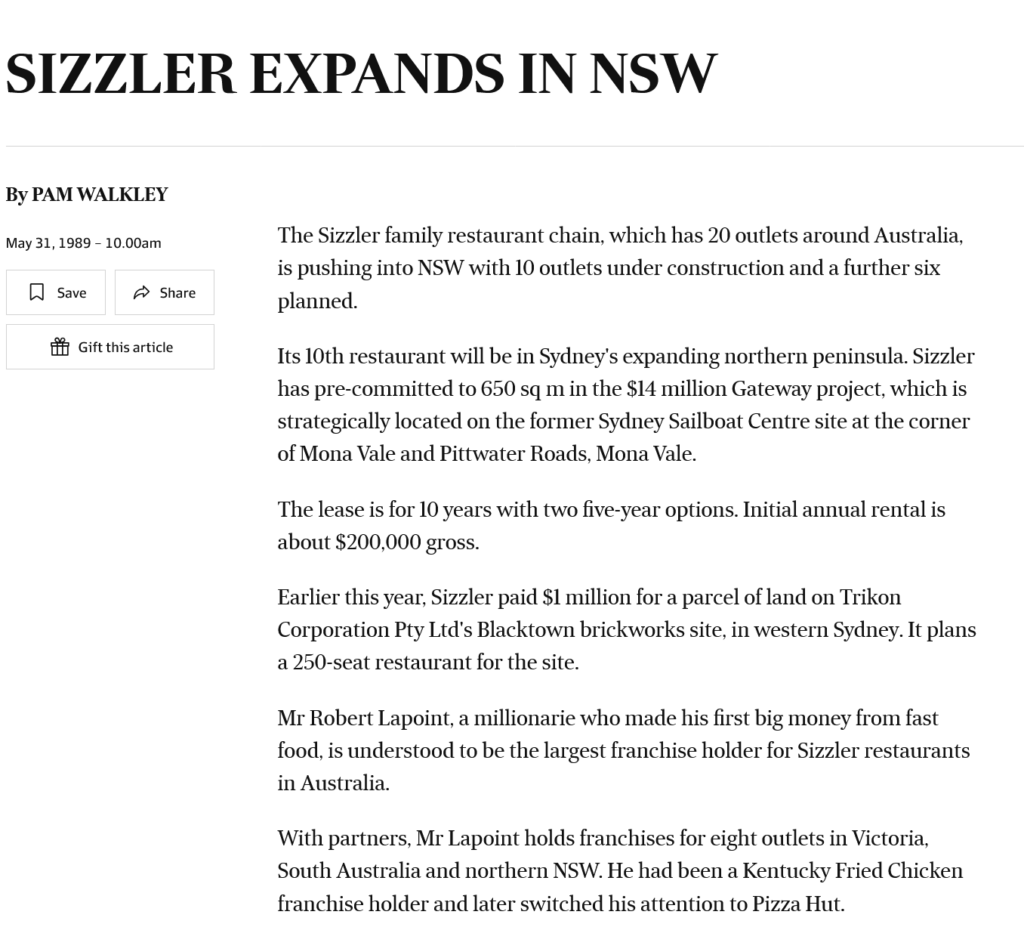
In 1990, 20 new Sizzlers open in Australia, and in total there are now 45, and Sizzler became popular. Diners in 1990 were looking for moderately priced meals that could also accommodate children (watch out Sizzler, Pizza Hut will soon be a buffet!).
It is reported that Sizzler’s sales started to boom after 1990, when the chain had established sufficient critical mass in the key Sydney and Melbourne markets to justify television advertising.
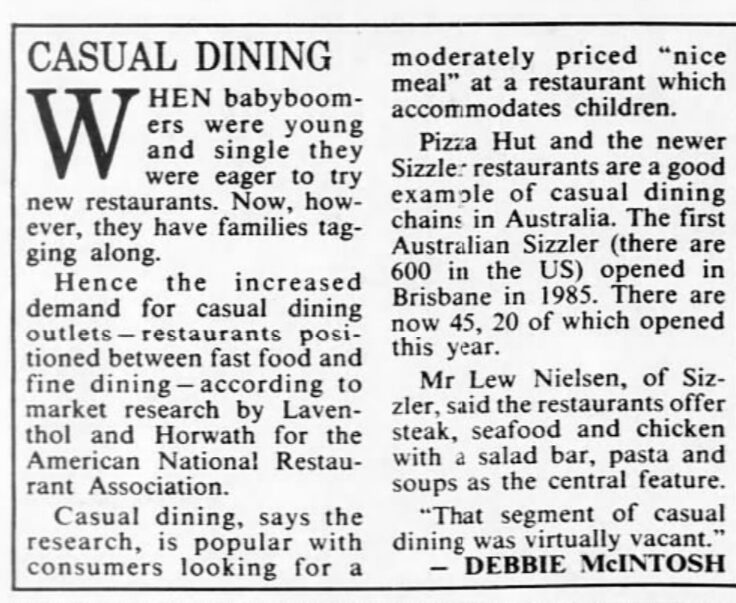
In April 1991, a Hong Kong multinational conglomerate, Jardine Matheson starts to take over half of the Sizzlers (and Pizza Huts) in Australia.
It starts buy purchasing 50 per cent of Mr Bob Lapointe’s Sizzler Restaurants Australia Ltd.
This is where Sizzler in Australia gets interesting. Two huge companies now control two separate markets in Australia. Territories are created in Australia.
“As part of the deal, Jardine Australia Restaurants (Vic) Pty Ltd will form a joint venture with SRAL to operate the Sizzler “steak-seafood-salad”franchises in northern NSW and South Australia.”
Jardine Foods was already the owner of all Sizzlers in Tasmania and Victoria before this deal was signed.
This will divide the Australian Sizzler market between the Hong Kong company Jardine/Lapointe and Collins Food International of the USA.
In 1991, Jardine operated 117 Pizza Hut restaurants and delivery units in Victoria, SA, and Tasmania. Oddly, it went into competition against itself in these States. It owns 22 Sizzlers in Australia.
1991 see’s another 30 Sizzlers open in Australia.

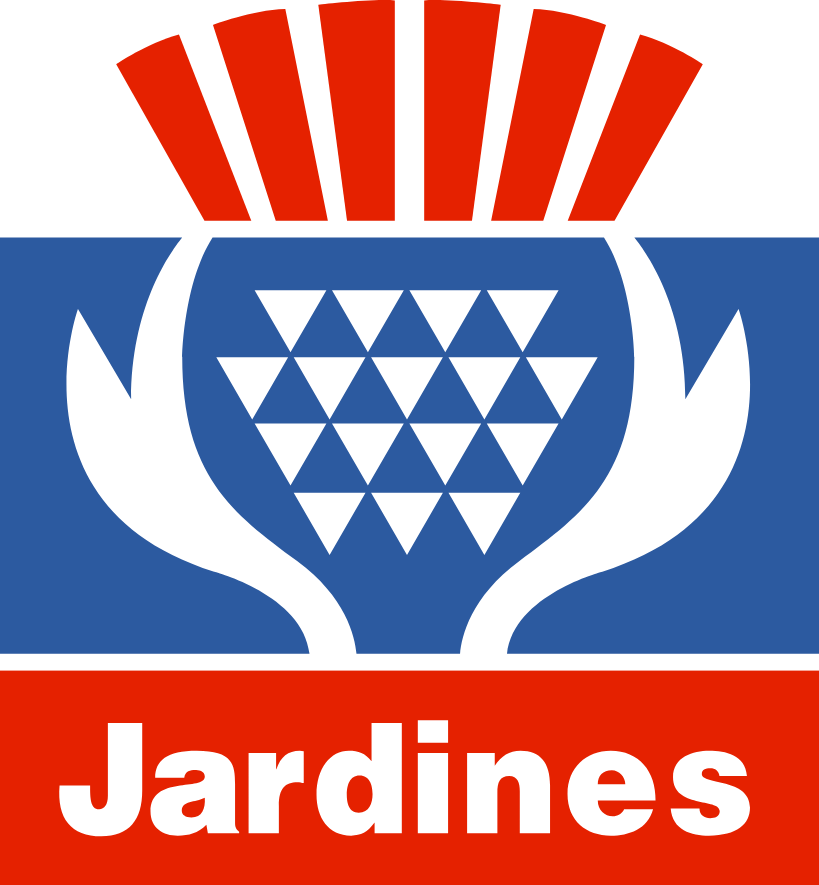
Two companies will now share control of Sizzler in Australia, and own half the market roughly each. Collins Foods will control Queensland, Southern NSW, Western Australia and the ACT.
Jardines will control South Australia, Tasmania, Victoria, and Northern NSW. This will play a crucial role in the future of Sizzler, particularly when its popularity declines.
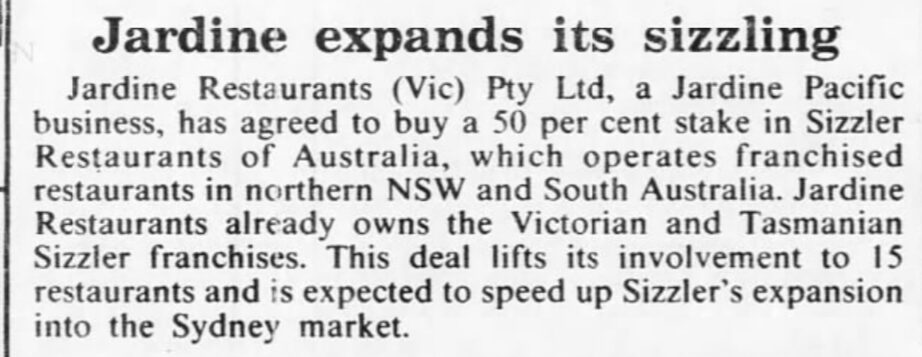
The early 1990s see Sizzler become a national chain owned by two companies and two territories. Sizzler becomes a household name and very popular in Australia.
In 1992 it is reported how successful Sizzler is in Australia, despite the recession of the early 1990s in Australia.
It is reported sales jumped 29% to $207 million in the 12 months to November 30 1992. Sizzler opens 14 new stores, bringing its total to 73 outlets. Sizzler stores that had been open for more than a year had customer traffic up 3% since November 1991. Their sales increased by 1.3%.
There are reports detailing lengthy lines for newly opened restaurants. Patrons reportedly waited up to 2 hours to dine at a Sizzler in 1992.
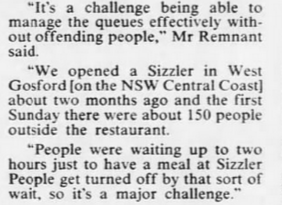
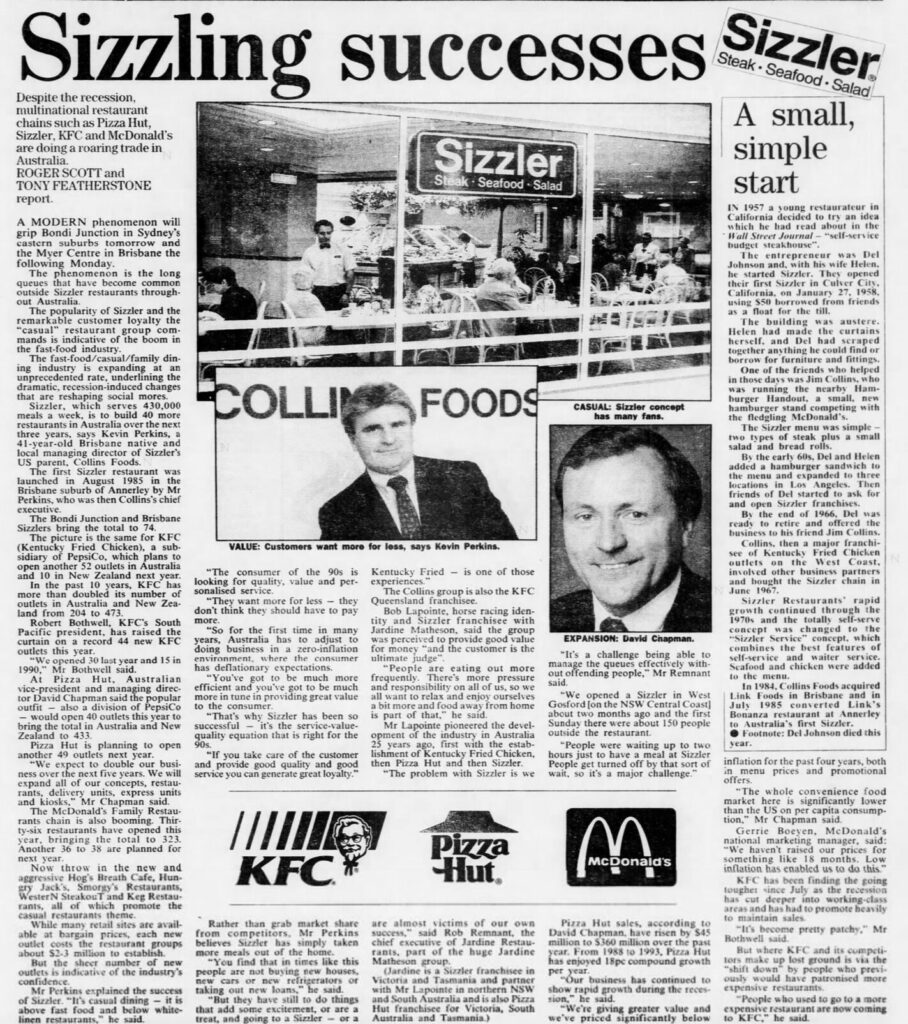
1993 see’s Pizza Hut Australia change to a buffet style option for all sessions, and oddly Jardine is now in competition with itself where it owns Pizza Hut and Sizzler in its territories. Both restaurants target families going out for dinner for a cheap nice meal with a buffet.
It is reported that Sizzler is now close to saturation point in Australia in 1993, “We feel like we are running close to saturation of current demand,” he says.
There were 80 Sizzlers in Australia in 1993.
In 1995, takeaway restaurants became more popular, as consumers moved to more takeaway options for cheap family meals. In 1995, it was reported that sales of takeaway food increased by 15%. This trend hurt Sizzler but benefited its competitors. These competitors included family dine-out and takeaway options like McDonald’s and Pizza Hut.
Jardine in 1995 announces to spend $45 million on its Australian restaurant operations, including $25 million alone on Victoria’s Pizza Huts, Sizzlers and The Wokery outlets.
“Jardine Pacific director Mr Y.K. Pang says confidence in Victoria’s retail sector is driving the $25 million investment, primarily to refurbish and expand seating capacity at some of Victoria’s 116 Pizza Huts and 38 Sizzler restaurants.”
It appears Sizzler really started to struggle in 1995,
“Mr Pang says the past year has been more difficult for Sizzler than Pizza Hut, which has benefited from a different approach, including advertising campaigns and new value offerings such as the all-you-can-eat (The Works) deal.”
1996 see’s Sizzler go bankrupt in the USA, it was a tired old brand for many years, while it was booming in Australia in the early 90s.
“Sizzler International is owned by the US company Collins Foods International (CFI). The Australian arm of Collins holds the local Sizzler franchise and runs 40 Sizzler outlets in Queensland, southern NSW, Western Australia and the Northern Territory, with the 39 Sizzler outlets elsewhere in Australia owned by Jardine Matheson, some in partnership with Bob Lapointe.
Sizzler’s president and chief executive officer, Mr Kevin Perkins, said yesterday the company expected to focus on the AsiaPacific region, as well as Australia, where it operated both Sizzler and KFC restaurants.
No store closures are expected in Australia, with the bankruptcy proceedings relating only to Sizzler’s US domestic operations.”
However sales in Australia were also down. The popularity of Sizzler starts to drop, its has competition with itself as Pizza Hut’s boom with a buffet in Australia. It is reported that 1996 sales were down by 10 million vs 1994 sales.
Sizzler’s popularity declines in the late 90s, and it takes a turn for the worse in 1997.
Jardine announces in January 1997 that it is selling its restaurants in Australia. It owns half of these restaurants. The decision is due to declining sales. Pubs and people gambling in them (pokies) are cited as major factors in the fall of sales. All Sizzlers in South Australia, Victoria, Northern NSW and Tasmania, and half of the Sizzlers in Australia are put up for sale.

Initially Jardine is meant to sell all its Sizzlers to Collins, so it could become a true national operator of the Sizzler chain, however both parties do not come to an agreement on a terms of price.
Instead, they agree to part ways. Jardine has to pay compensation to Collins to close its Restaurants in the Australian market and sell them.
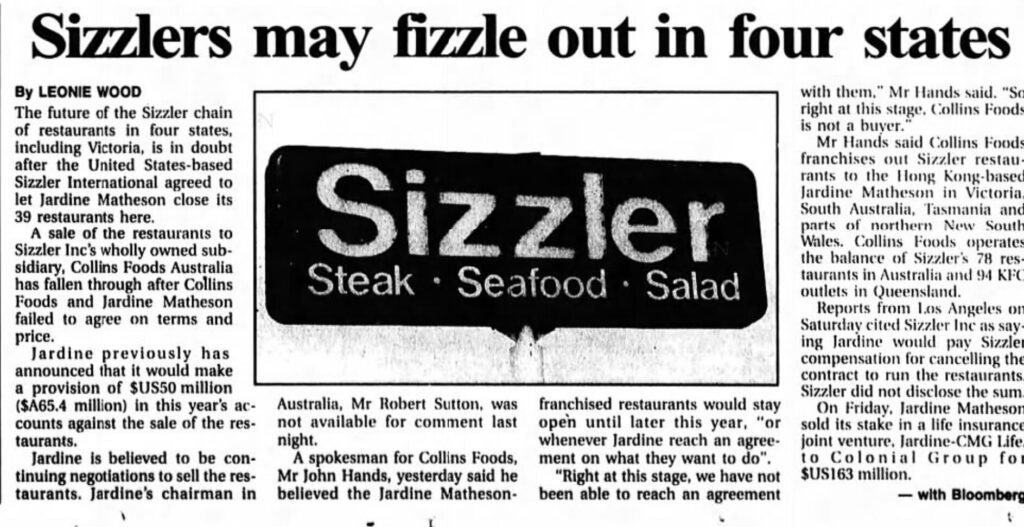
No company agree’s to buy the 39 Sizzlers, and Jardine moves ahead in completely closing them and selling them off.
April 1997 is the end of Sizzler in Victoria, South Australia and Tasmania.
So what happened to Sizzlers in Victoria, South Australia and Tasmania? In April 1997, Jardine finds a buyer for the Sizzler sites.
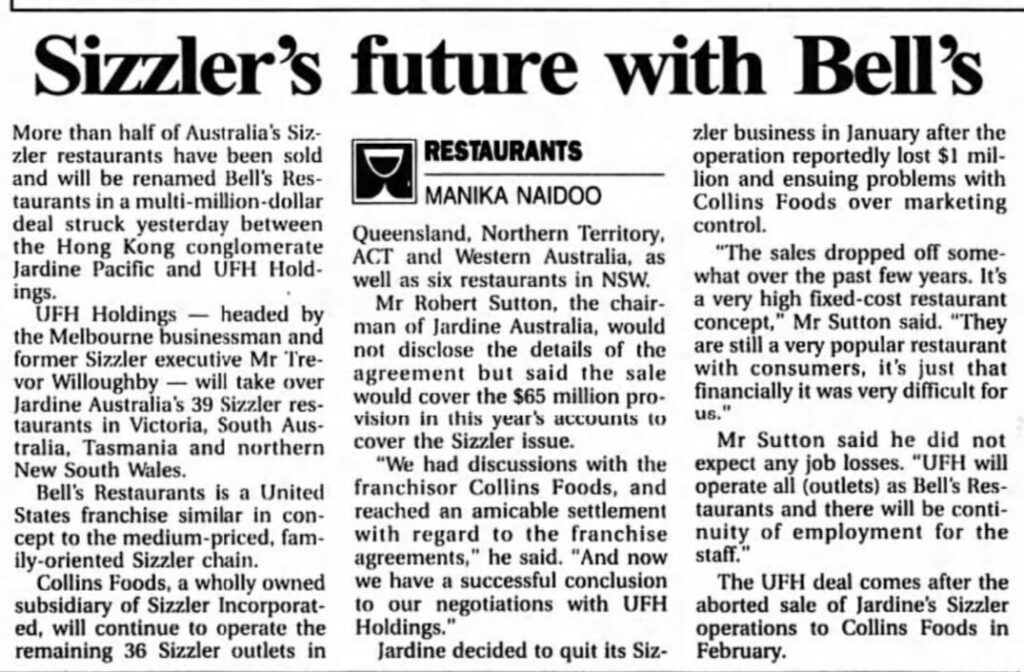
UFH Holdings, a company headed by a former Sizzler/Jardine executive Trevor Willoughby, who previously worked for Jardine but left to start his own restaurant chain known as Bells in 1993.
Bells agrees to take over 39 Sizzler sites in April 1997, including the continuation of employment.
In April 1997, South Australia, Victoria, Tasmania and Northern NSW lose all their Sizzlers officially. Bells however was short lived.
Bells was a similar concept to Sizzler, but without the Salad bars.
The plans were “The seating in the 39 Sizzler restaurants was meant to be cut from 260 to 180-200 (in 1995, UFH was planning Bell’s sites that would seat 280-320 people). Customers will be seated at their table, then will be required to go to a counter to place their orders and to the bar to buy drinks. The menu will feature standard family-restaurant items, including steak, seafood, pasta and salads, and a dessert trolley. The Sizzler salad and dessert bars are being removed; ditto for the plastic plants. “We want live plants, not plastic,” Willoughby says.
39 Sizzlers are converted to Bells over the following months. Bells only lasts 3 months in Australia, with some only opening for a few weeks after conversion, some never actually opening, even after rebranding and renovating.
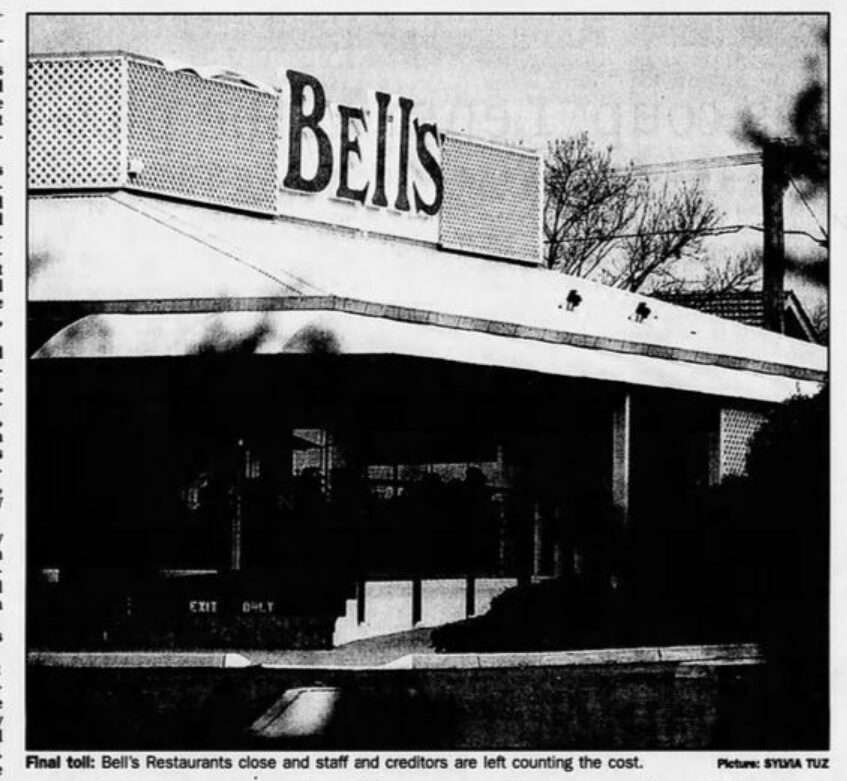
It was announced in June 1997 that Bell’s was a huge failure and would be closing down.

Now I have no memory of Bells Restaurants. It was reported in the media that some were only rebranded and opened 3 weeks before closing. In total, the chain was only in control of Sizzler sites for three months.
Users said in the comments of the page that the restaurants were dead. Families would sometimes turn up for meals, look at the prices, and simply walk out. The value was not there either.
This was also reported in The Age
“However, close observers of the transformation say Bell’s alienated the Sizzler all-you-can-eat-for-$9.95 clientele.
“There was simply not enough time to build up a new brand with new customers,” one observer says. “
Due the bankruptcy, all former Bells and Sizzler sites are put up for sale.
Oddly the guy that started Sizzler in Australia, starts expanding his new chain in Australia, Lone Star Steakhouse Salon.
Lone Star picks and chooses the former Sizzler/Bells sites it wants in late 1997, and starts its massive expansion in Australia in the former Sizzler sites.
Sadly my local Sizzler did not re-open as a Lone Star. From memory, it became a small family-run buffet. It was abandoned for many years and then knocked down.
However, one about half an hour from my place was converted to a Lone Star. I sadly never went to one.
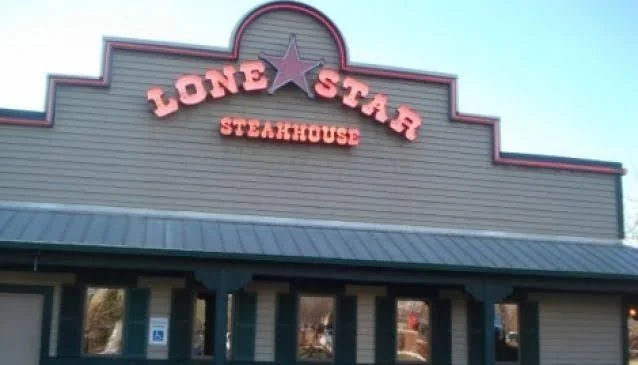
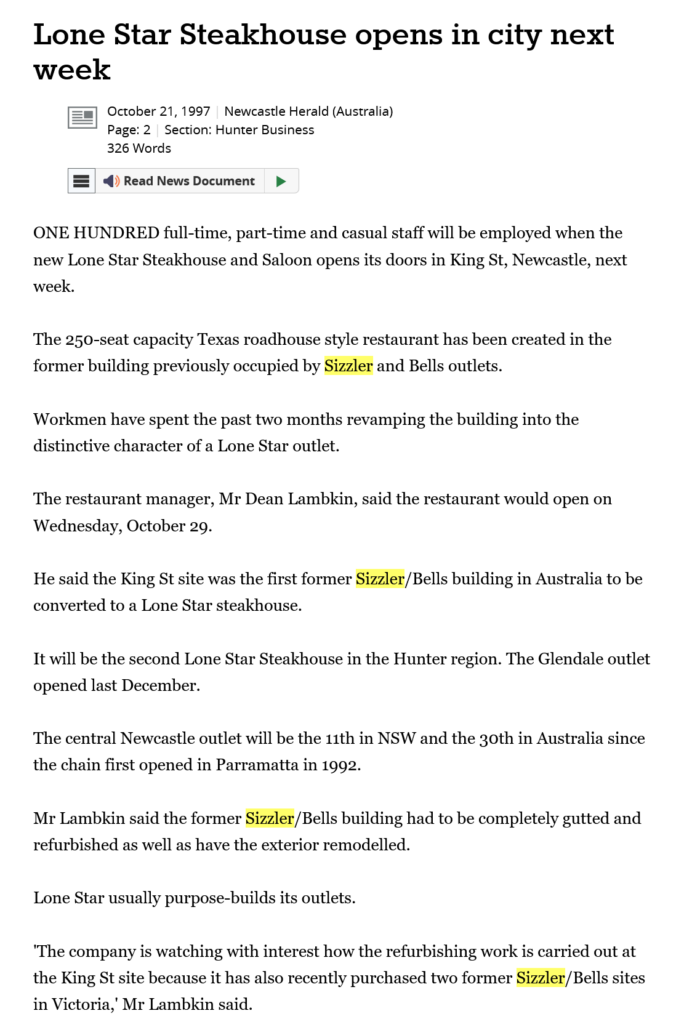
New South Wales and Victoria also saw restaurant chain Valentine’s take over many former Sizzler sites in 1997.
Valentines purchased six key suburban properties formerly owned by the Sizzler chain with four in NSW and two in Victoria. Valentines is a New Zealand steakhouse with a buffet chain.
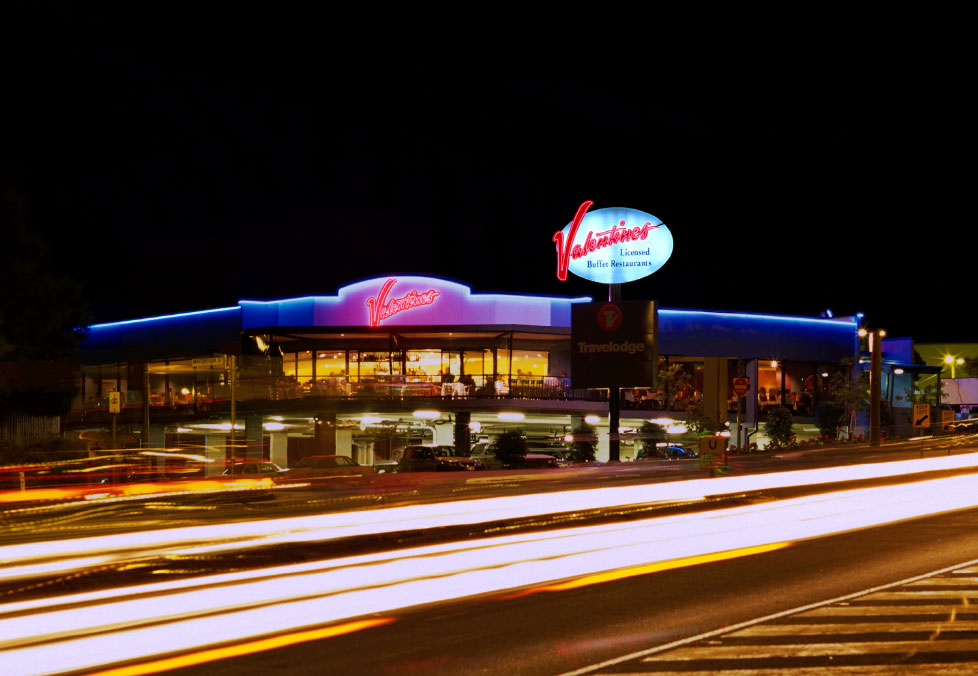

Sadly, both chains eventually failed in Australia, and many Sizzlers became abandoned, or converted to other business in Northern NSW, Victoria, Tassie and SA.
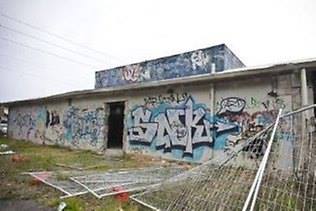
Collins continued to run Sizzler in QLD, NT, WA, ACT and some parts of NSW into the 2000s. At its closure in SA, Victoria and Tassie, there was heaps in Queensland still.
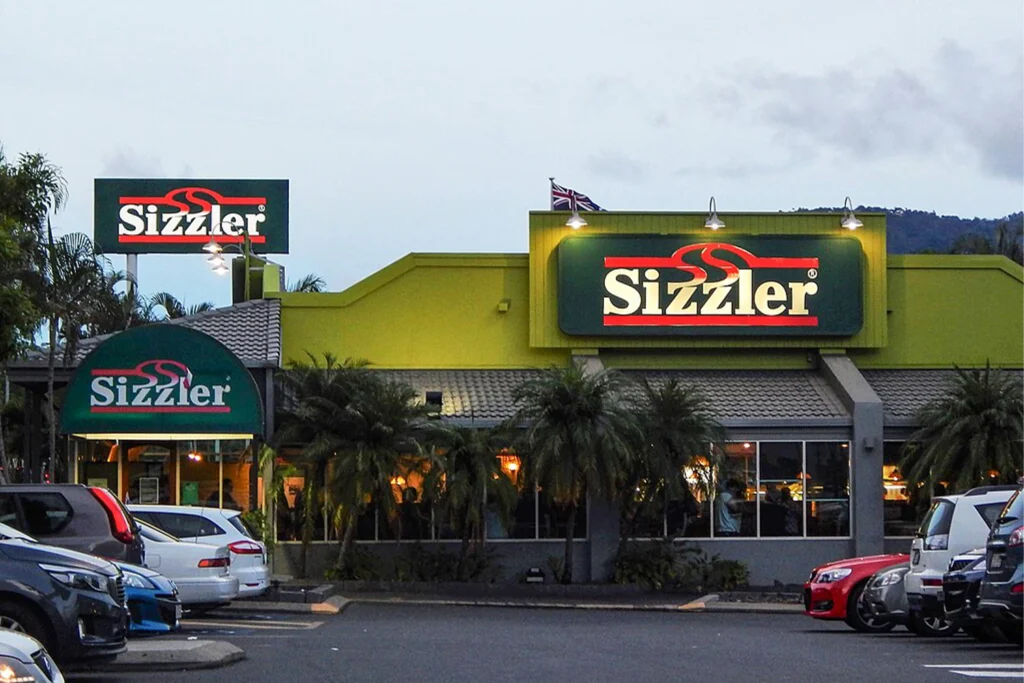
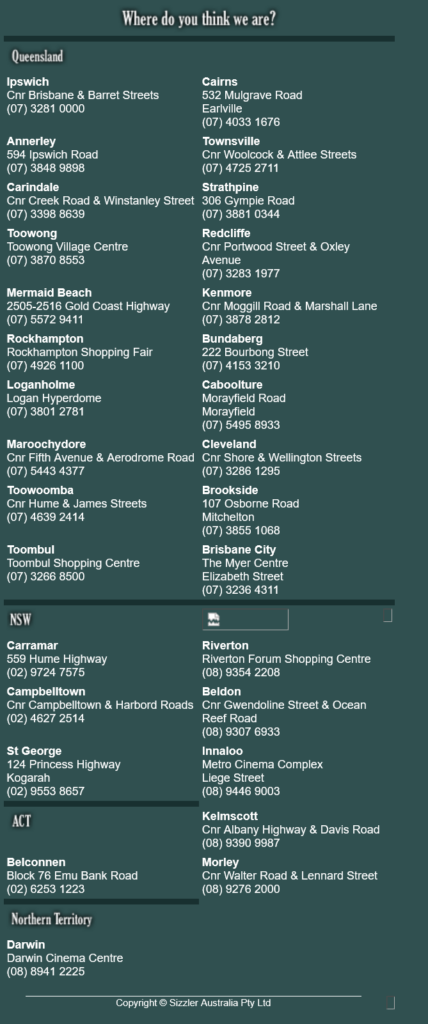
In the 2013 financial year, Collins Foods reported a decline in revenue for its Sizzler operations in Australia, blaming the downturn of the casual dining sector in the country. In June 2015, Collins Foods wrote down the value of Sizzler by AU$37.5 million. In an investors meeting by Collins Foods, CEO Graham Maxwell states: “We no longer consider Sizzler to be a strategic growth prospect in Australia and therefore we will not be investing further capital”. At the time of the fiscal announcement in 2015, Collins had 26 company-owned Sizzler restaurants across Australia.
By 2020 there were only nine Sizzlers left in Australia, still owned by Collins, however, Covid19 finally killed off the Sizzler brand in Australia. In October 2020, Collins Foods announced that it was closing all remaining Sizzlers left in Australia.
All remaining Aussie Sizzlers closed in November 2020.

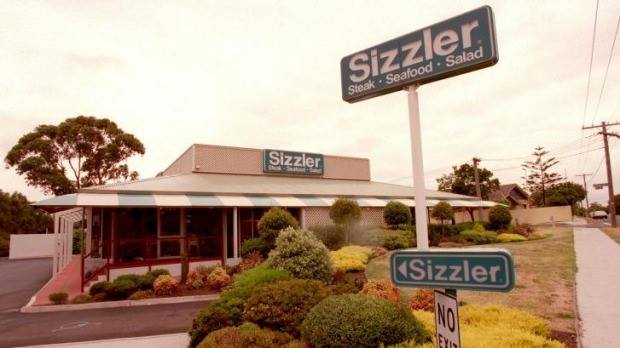
Leave a Reply